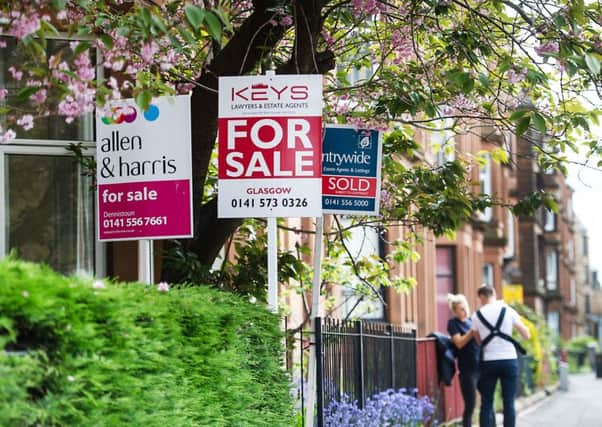Leader comment: House sales show economic stimulus counts


Taking that up a notch, looking at how house sales in Scotland and the rest of the country, figures released by three organisations reveal house prices in Scotland have risen at half the rate of the UK.
This is concerning. To understand what is going on various economic factors need to be taken into account as well as looking at the wider underlying health of the Scottish economy.
Advertisement
Hide AdAdvertisement
Hide AdThere is no getting away from the decline of the Aberdeen property market, a sad and ongoing tale, with the latest figures showing house prices in Scotland’s oil capital plunged by 8.7 per cent. There could hardly be a starker and clearer demonstration of the very real impact the downturn in the oil price has had.
Of course, rapid house price increases are not necessarily a good thing, they fuel inflation, which was revealed yesterday as having risen to 1 per cent - up from 0.6 per cent in August, and at its highest rate in nearly two years.
But this slower growth in house prices in Scotland echoes other economic indicators that the country continues to lag behind the rest of the UK.
Last week Scottish Government figures revealed that GDP in Scotland had grown by 0.4 per cent between April and June 2016. But the concern was that meanwhile the equivalent growth across the UK in those same months was 0.7 per cent.
John McLaren, honorary professor at the Adam Smith Business School, at the University of Glasgow, said if such a concerning situation had become apparent at UK level “it seems highly likely that greater policy intervention would be forthcoming.”
Another economist, Professor David Bell from the University of Stirling, commenting today in The Scotsman about the difference in house sale growth between Scotland and the rest of the UK said Holyrood’s commitment to building houses - at least 50,000 affordable properties by 2020 - was undoubtedly good for the economy - but that the effect this would have on house prices was unknown, and flagged up the caution homebuyers were displaying in the wake of Brexit and the 2014 Scottish independence referendum.
This raises the question of the Scottish Government’s role in the housing market. Some of the differences in the rate of house sales might be attributed to the different tax regimes, which saw the old stamp duty replaced with the Land and Buildings Tax meaning a home worth £330,000 which would have attracted £9,900 in stamp duty is now paying around £11,250 and there is up to a 61 per cent hike at properties of £500,00. Perhaps this should give the Scottish Government food for thought about changing the tax regime to better stimulate the economy.